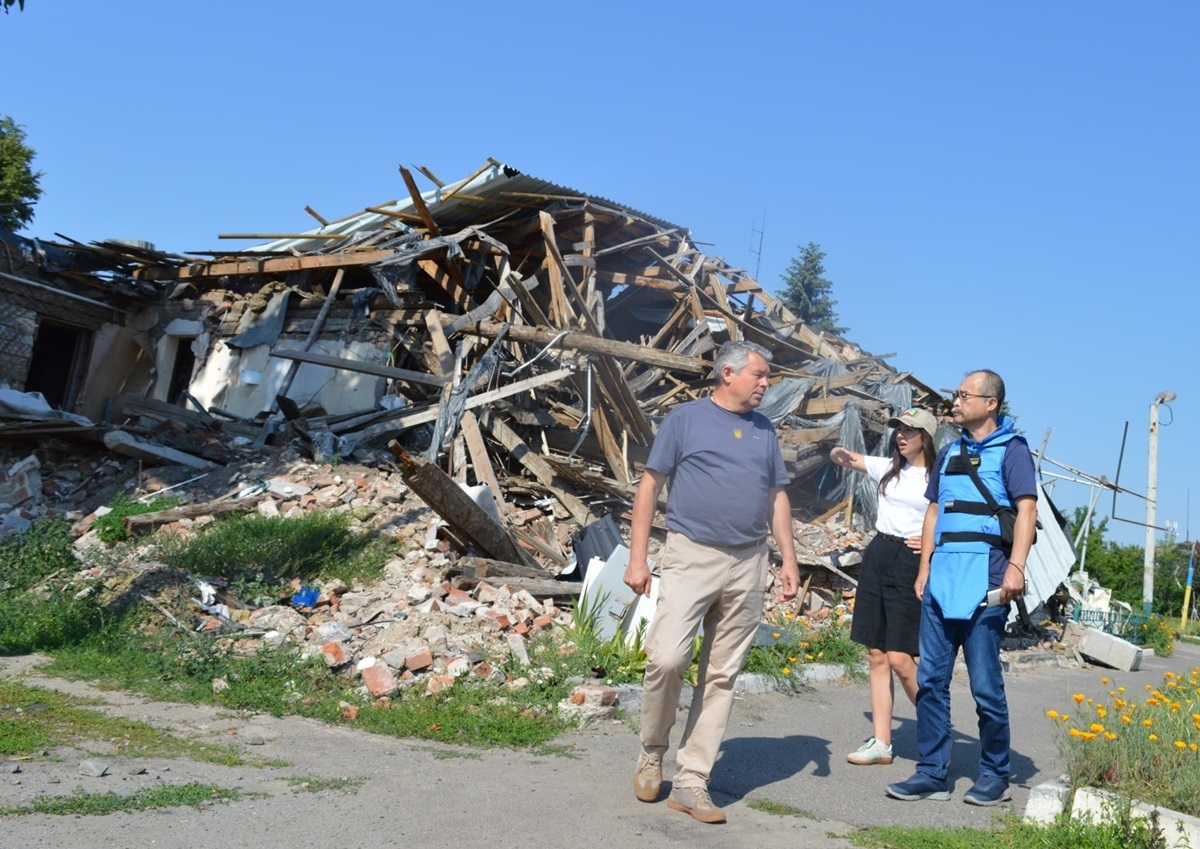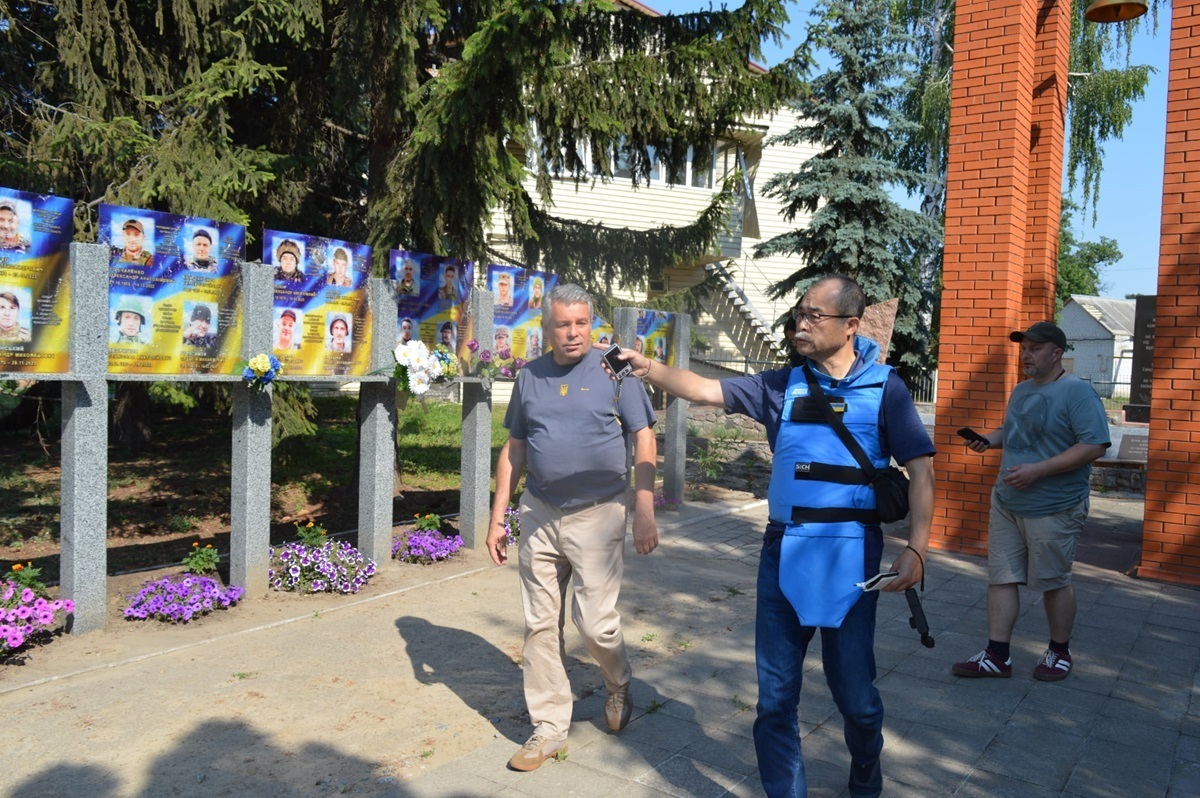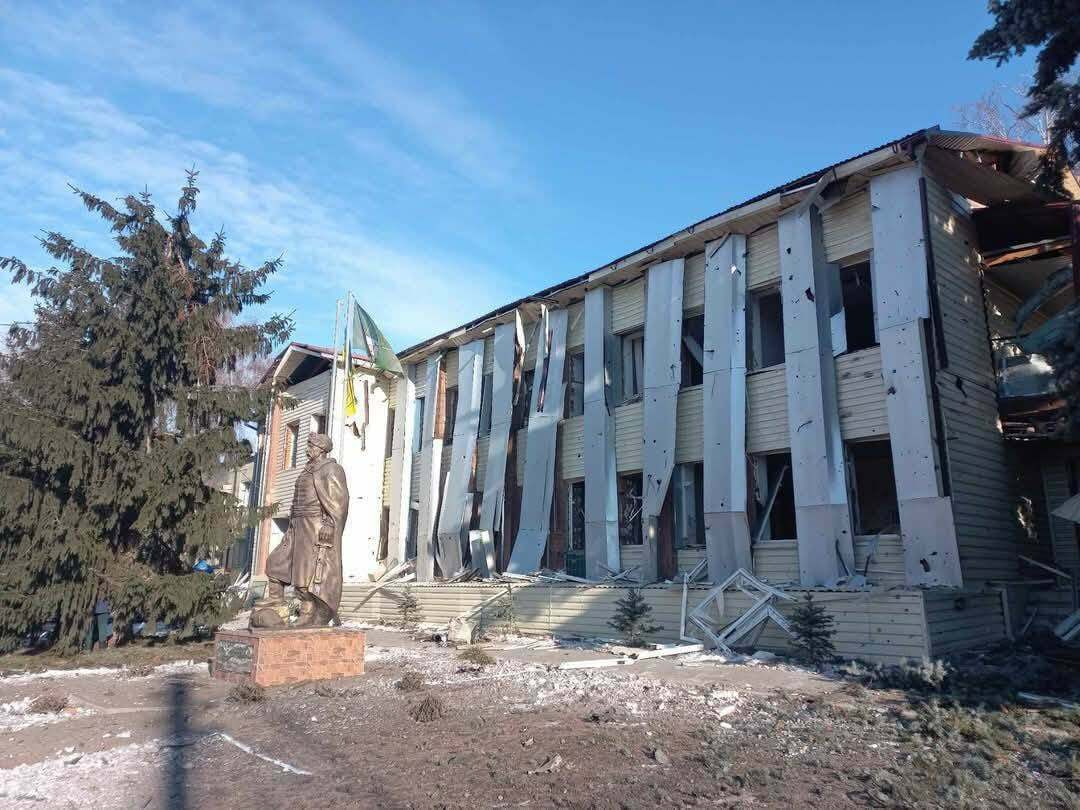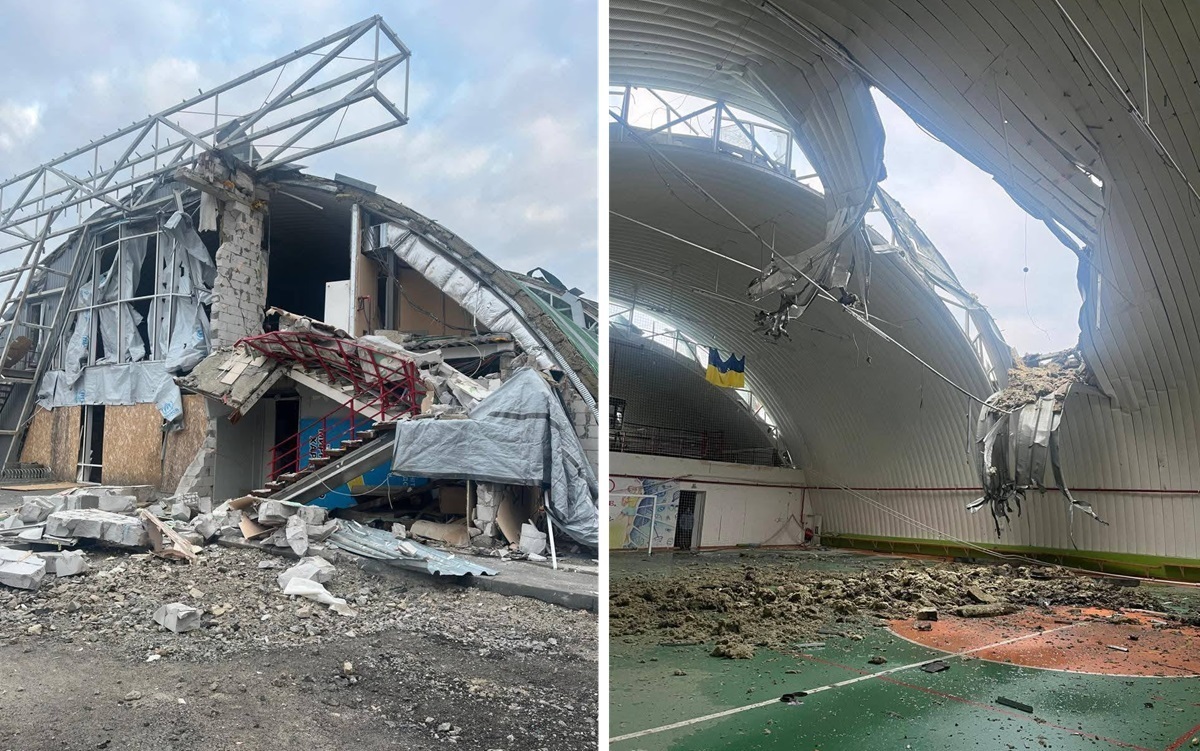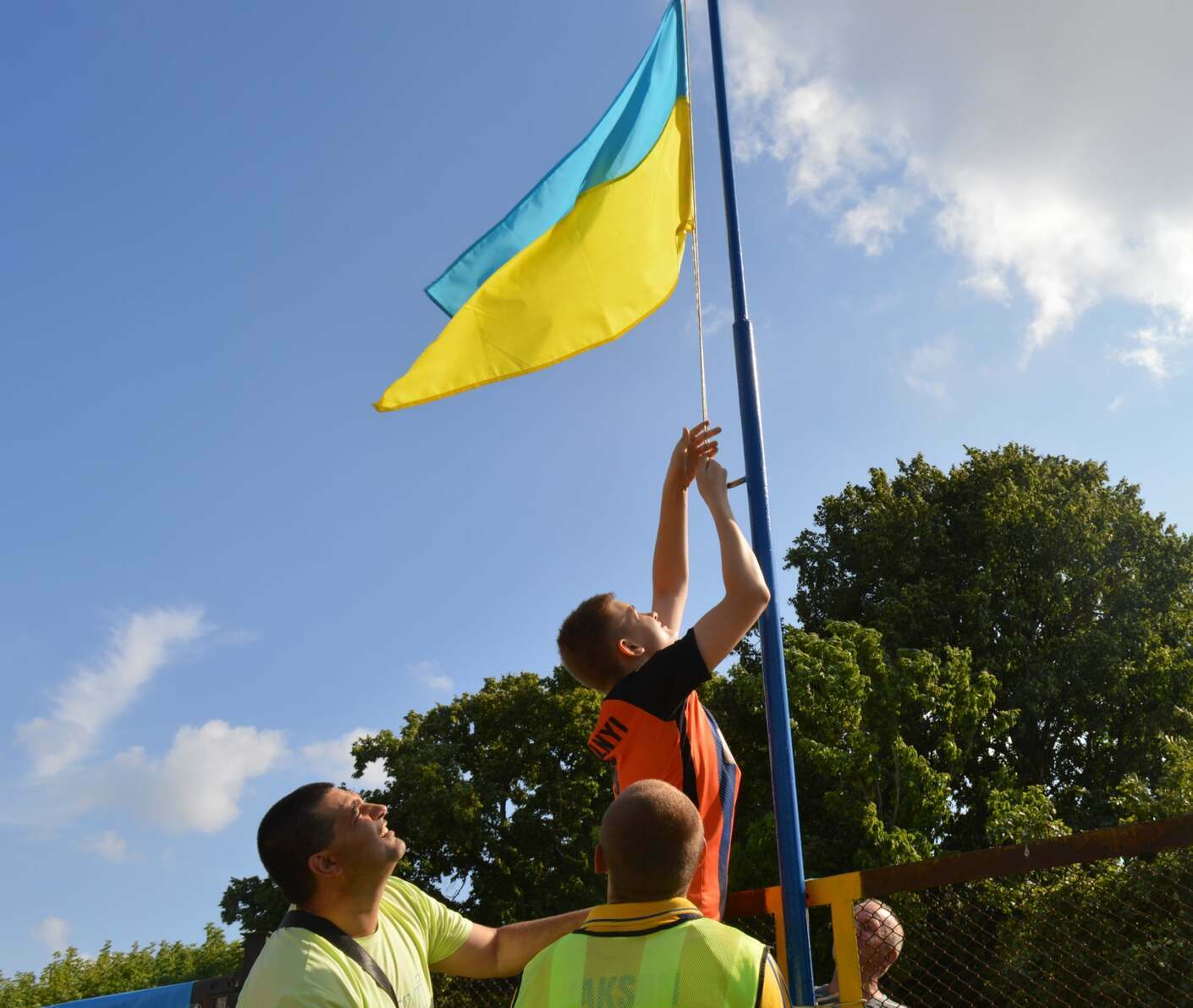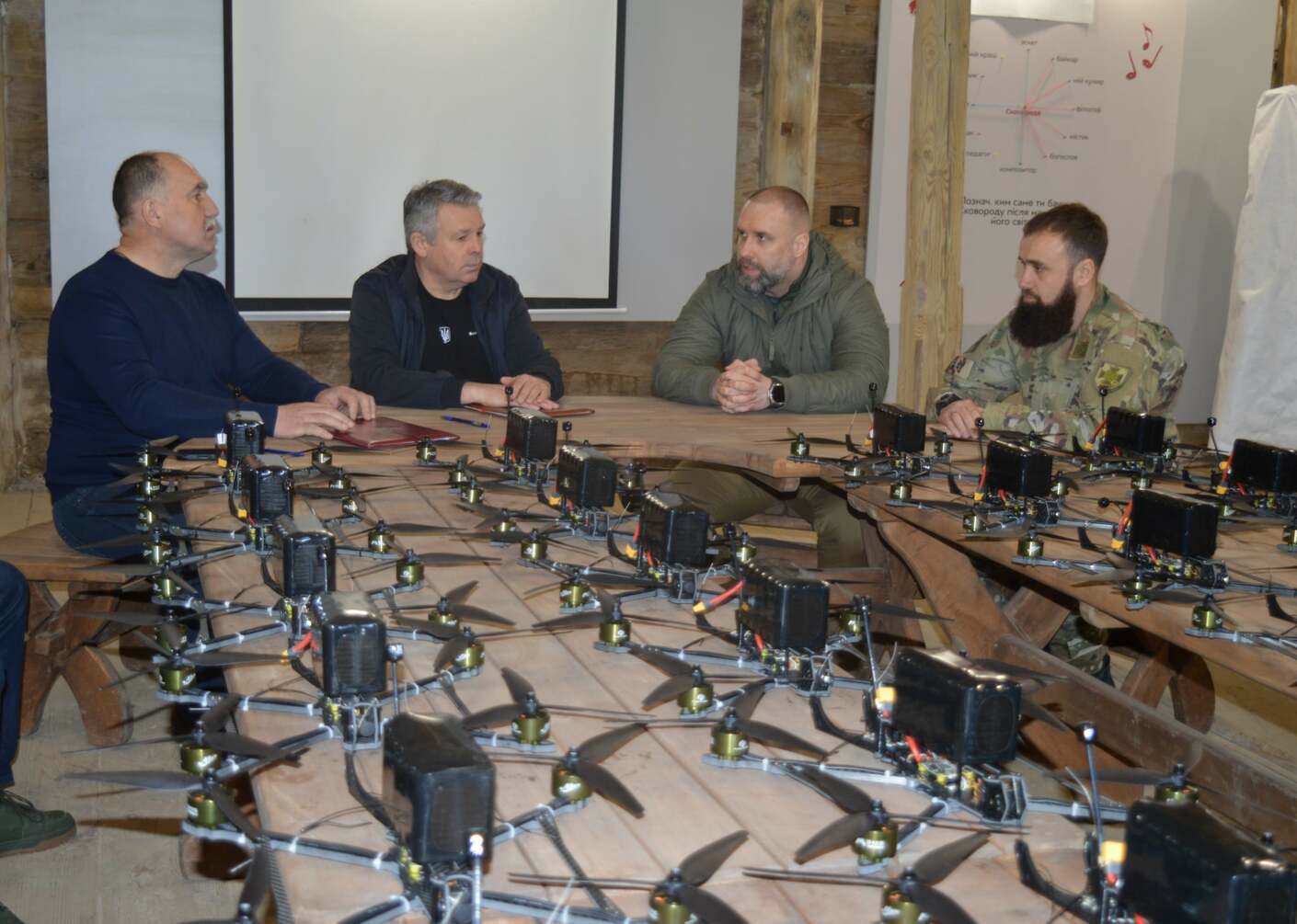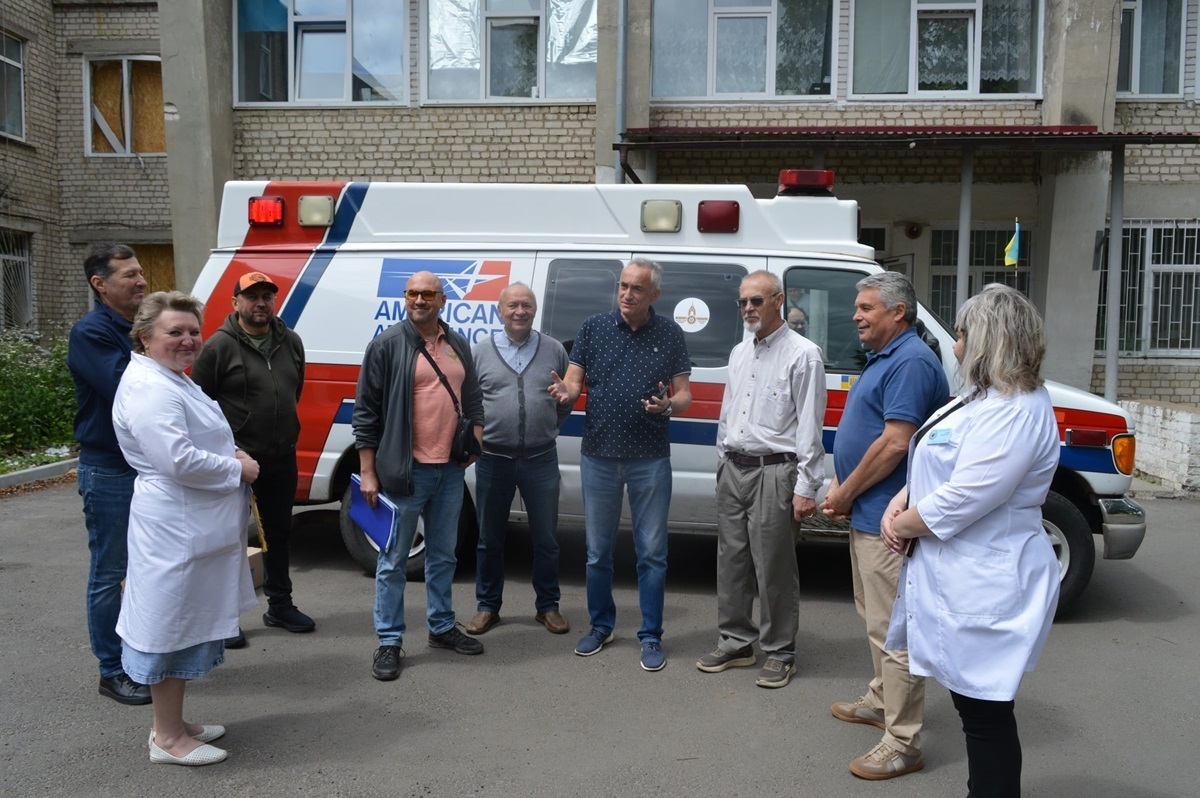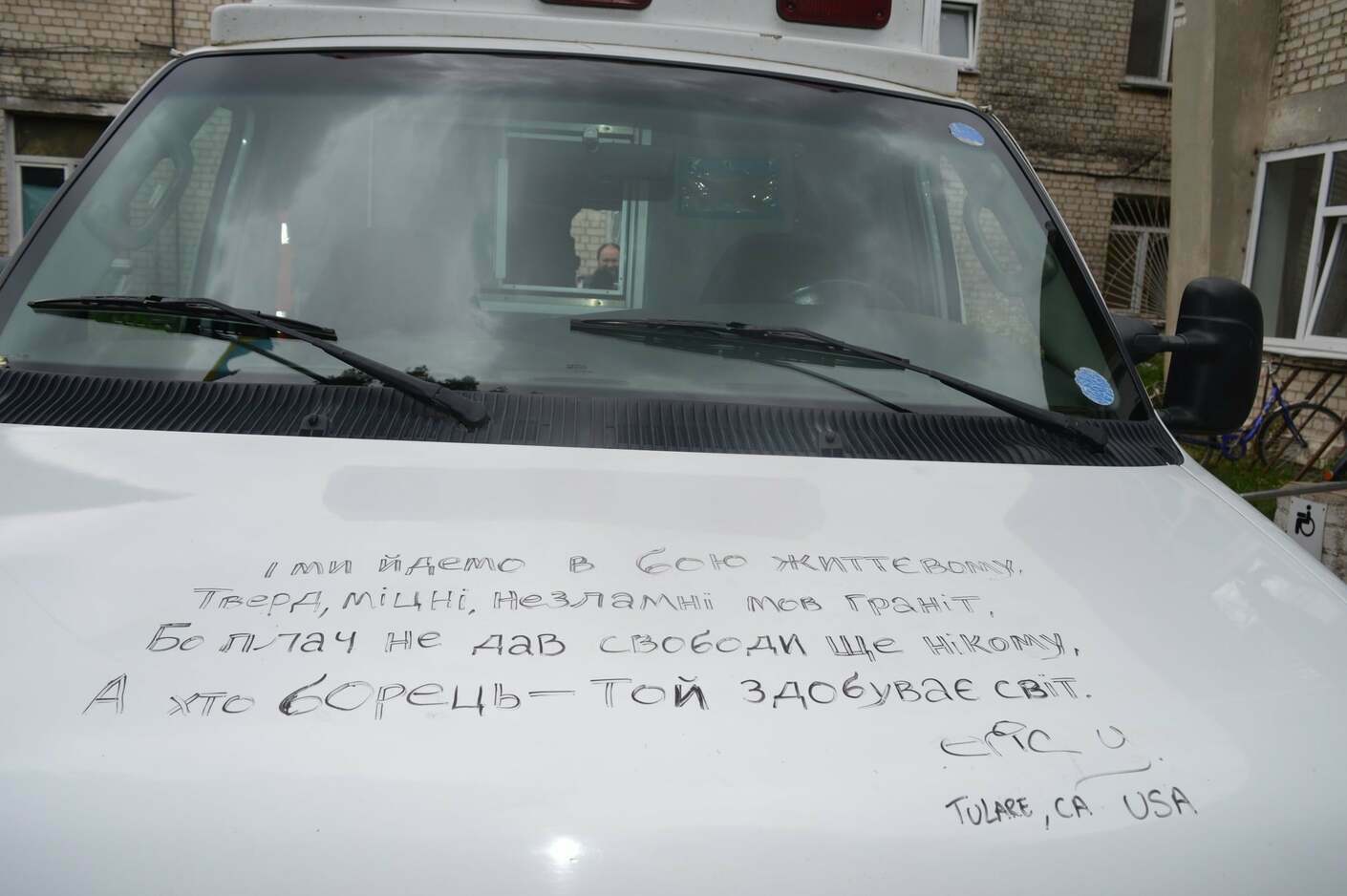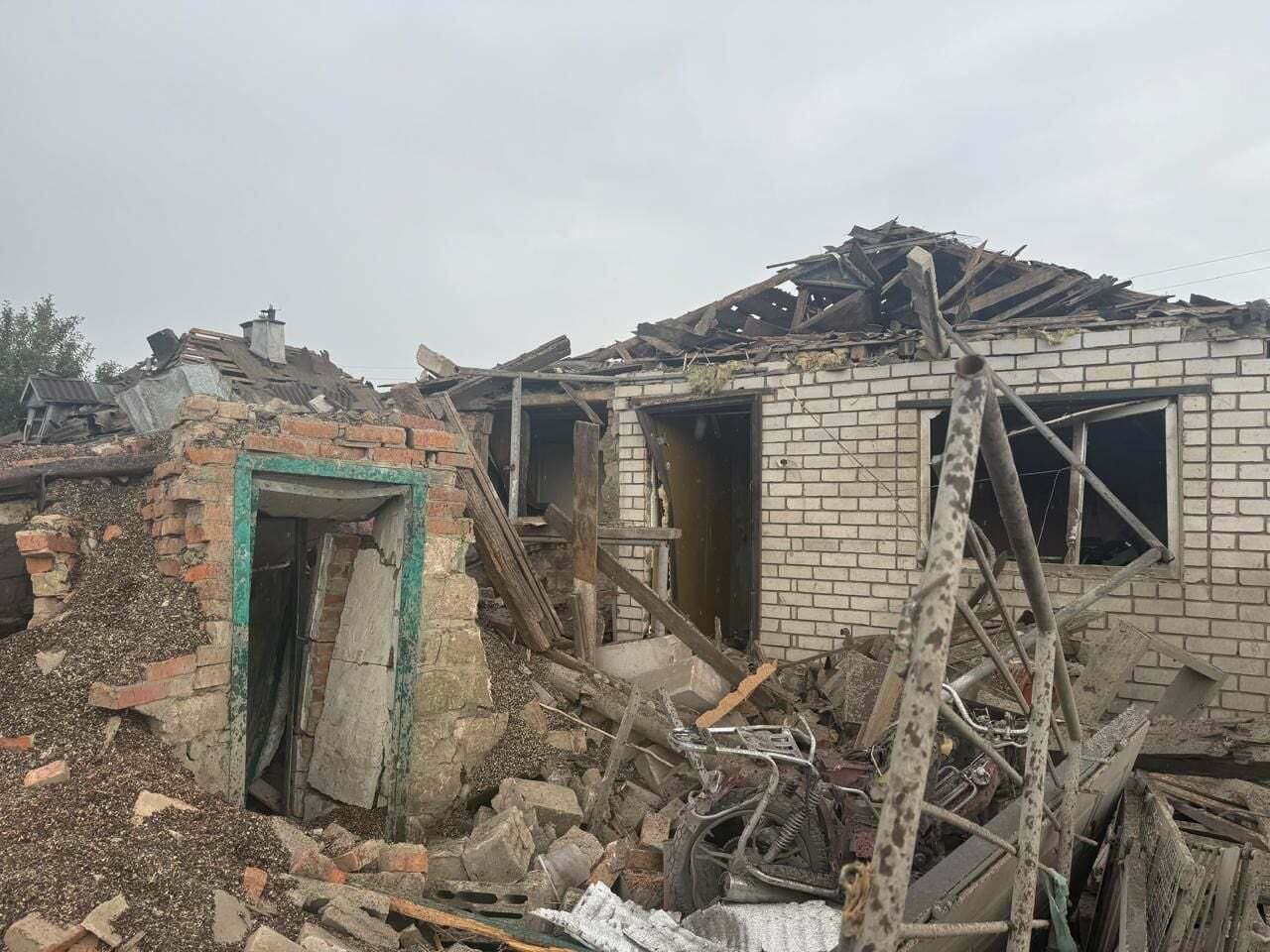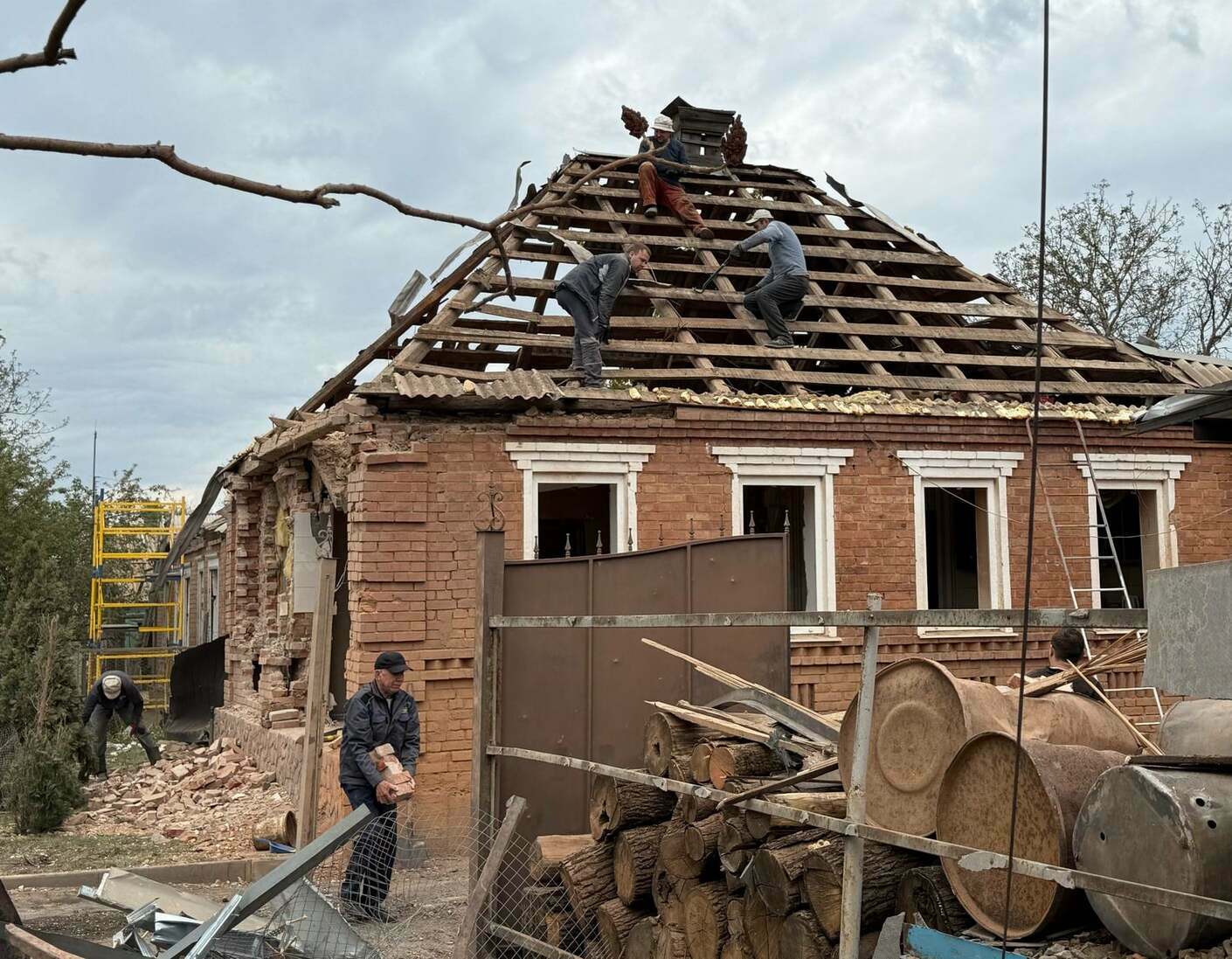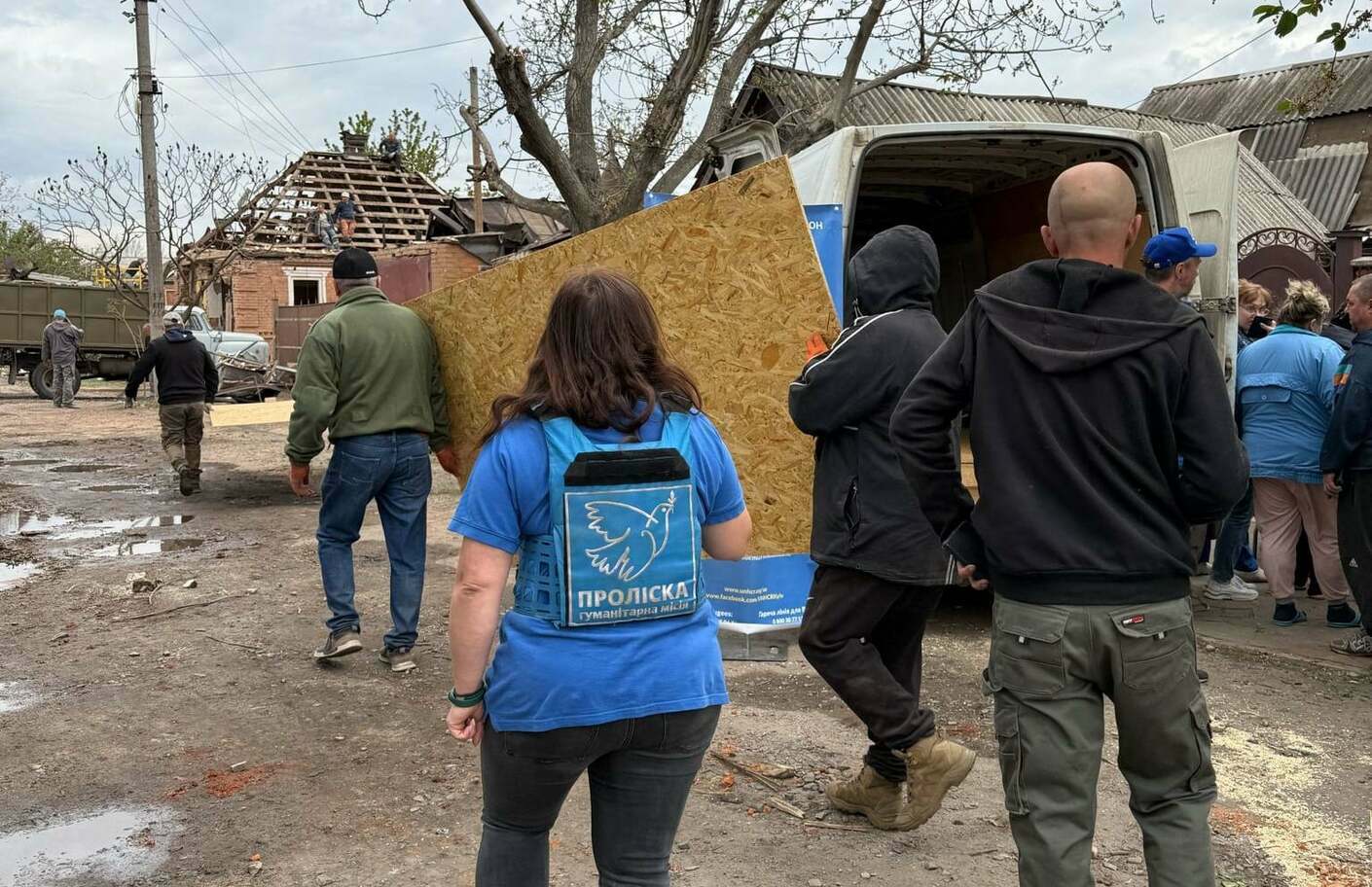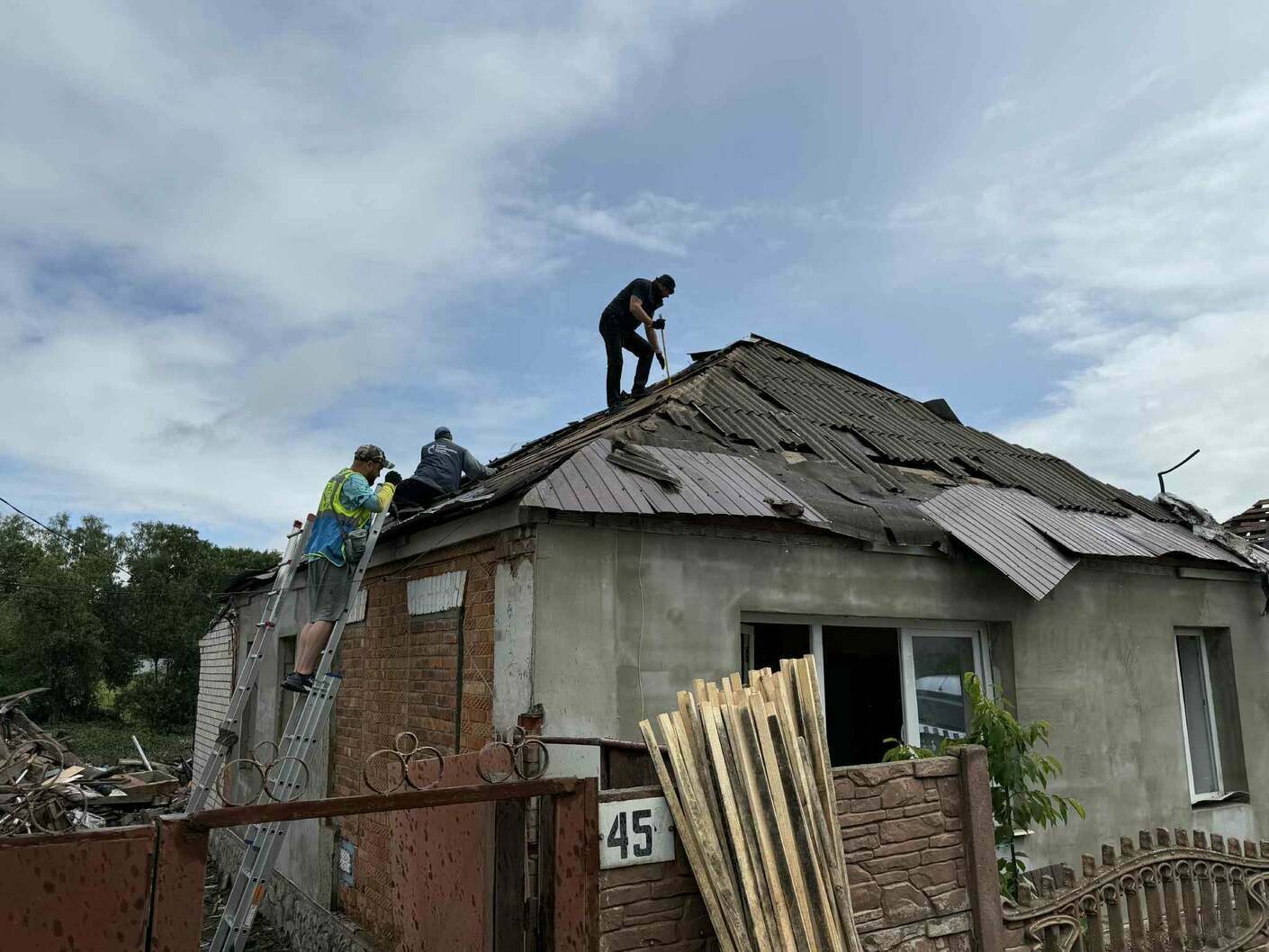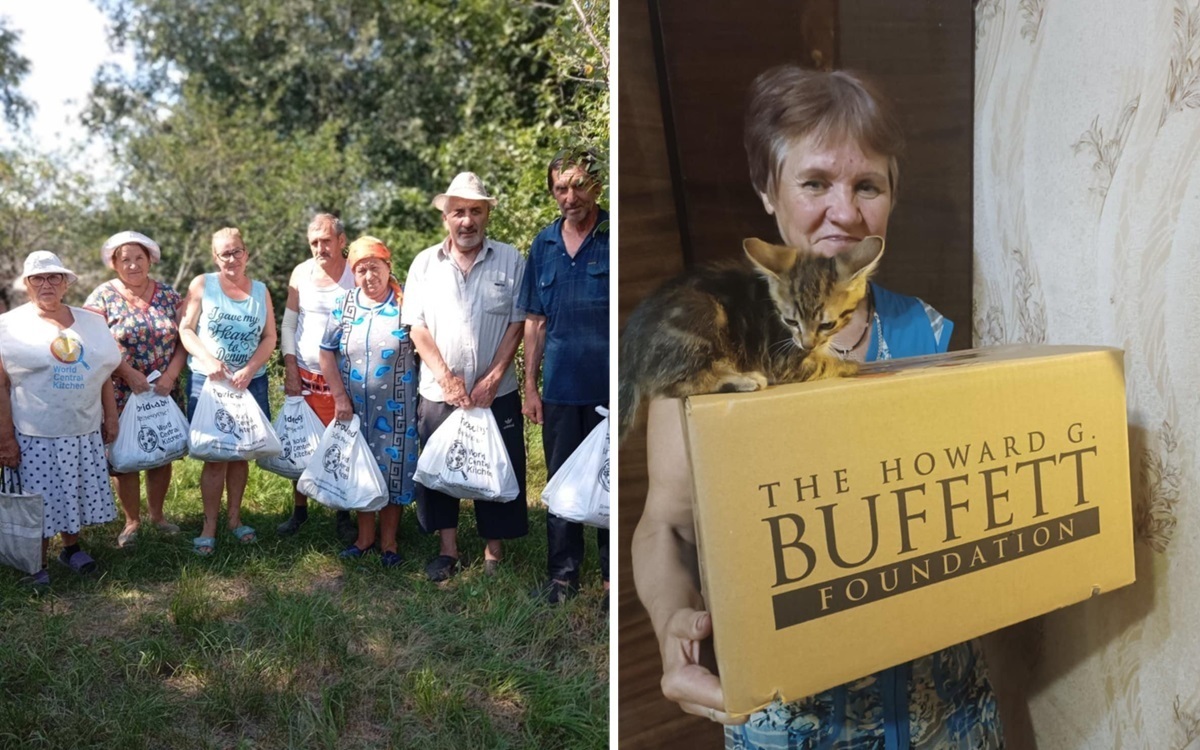Zolochiv and Zolochiv in the ‘Shoulder-to-Shoulder’ project. How two communities became one team in a great war
Viktor Kovalenko, Head of the Zolochiv community in the Kharkiv region, talks about the genocide of Ukrainians, international cooperation and the spiritual treasures of his hometown.
By Dmytro Syniak
‘Down there are wraith-things. I’ve seen them. There are Orcs, but these are worse than Orcs. The Silent Watchers are there. And there’s always a foul east wind...’
J.R.R. Tolkien
Viktor Kovalenko, Head of the Zolochiv community in the Kharkiv region, served in Afghanistan. He participated in several operations carried out by Soviet troops to clear mountain villages that were used as bases by Afghan guerrillas, known as the Mujahideen. Mr Kovalenko claims that no such operation took place without first negotiating with the village elders and offering the Mujahideen the opportunity to surrender. Even if they refused, Soviet troops would create a corridor for civilians to leave the village, and only after everyone who wanted to leave had done so would they start combat operations. ‘Not a single Soviet bomb fell on an Afghan city during the entire Afghan war,’ says Mr Kovalenko. ‘This shows that even the totalitarian USSR protected the lives of civilians. Russia does not save them; it eradicates people on purpose. It is eradicating Ukrainians.’
The Zolochiv community was one of the few on the Kharkiv border that the enemy failed to capture. In February 2022, the enemy broke through to the north and south of the community but failed to gain a foothold in the Zolochiv district; the defenders repelled the enemy troops. Only two villages, Turove and Makarove, were occupied, but these were later liberated following a September counter-offensive by the Armed Forces of Ukraine. Following this, General Oleksandr Nesterenko, who had led the defensive operation and counter-offensive in the Zolochiv area in 2022, was awarded the title of Honorary Citizen of the Zolochiv community.
The community is now helping the military to build defence lines, while dreaming of peace. Several investors are waiting for the end of hostilities, while farmers are waiting for their fertile land to be cleared of mines. Viktor Kovalenko, the community leader, spoke to Decentralisation.gov.ua about community life and its vision for the future on the border with the Russians.
Russians are organising a real hunt for people...
What is the current situation in the Zolochiv community? How many residents have left?
As soon as the opportunity arises, people come and plant their gardens. They preserve their houses and take their most valuable belongings and documents with them and leave. Then they come back again. So, there is a constant flow of migration. At the beginning of the hostilities, the community was home to around 28,000 people; now, that number has fallen to between 18,000 and 19,000. There used to be 2,800 children in the community, but now there are only 1,700. The situation is a bit calmer now and people are returning, but as soon as the shelling resumes: guided aerial bombs, drones, Tornado and Grad missiles are used, people flee again. The situation is most difficult in five border starosta districts, where around 1,800 people, mostly elderly, live. This is despite the daily shelling from guns, tanks, helicopters, aeroplanes and fibre-optic cable drones that cannot be damaged by any electronic warfare system. We are asking all residents of the border area to evacuate, but currently only children are being forcibly evacuated.
Have there been any human casualties in your community as a result of the full-scale invasion?
Russian troops have killed 91 civilians and injured about 400 more. But, as scary as it is to say, people are getting used to the war. Everyone hopes that it will end soon.
In early July, the whole of Ukraine was shocked by the news that a child had been killed and another seriously injured by a Russian drone near the village of Odnorobivka. How did this happen?
It is still difficult for me to talk about that case. This family left the community back in 2022, but the woman – a mother of two children – suddenly decided to visit her parents. She did not consult or inform anyone before the visit. She just got in the car and drove there. Odnorobivka is only 5 km from the border, where Russian drones are constantly patrolling. She thought that if she drove at night, the Russians would not notice her. On the contrary, they can see headlights very well at night. She was not to switch on the headlights under any circumstances. If she had called us, we would have told her all this and arranged for her to be escorted by a military vehicle with electronic warfare equipment. We would definitely have forbidden her to bring her children to Odnorobivka. But she did not even call...
On social media, the Russians usually describe such attacks as accidental. What are your thoughts on this?
The Russians can perfectly well see where they are hitting from their unmanned reconnaissance aerial vehicles. They can see where military personnel are stationed and where they are not. At the same time, they are hunting down civilians. They hunt down a grandmother digging in her garden and ordinary civilian cars. Before the full-scale invasion, the village of Ivashky was home to 800 people. Now, only 65 local residents remain. Every day, Russian drones and tanks are literally dismantling one house after another. Just yesterday, five FPV drones hit one house, destroying it almost to the basement. This happens almost every day. Drones, shells and missiles are flying at hospitals and outpatient clinics. The Russian military officers directing these attacks have no morals, no conscience and no military honour.
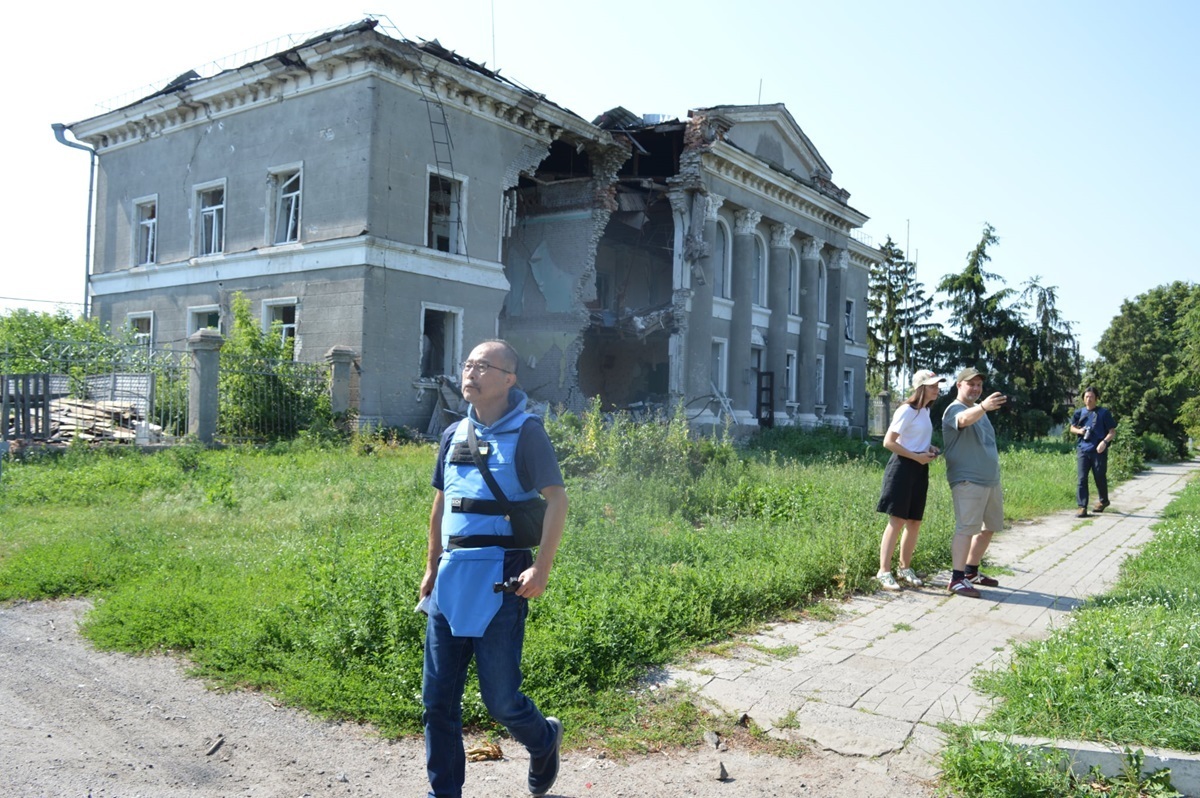
The building of the former district administration in Zolochiv, destroyed by an enemy missile
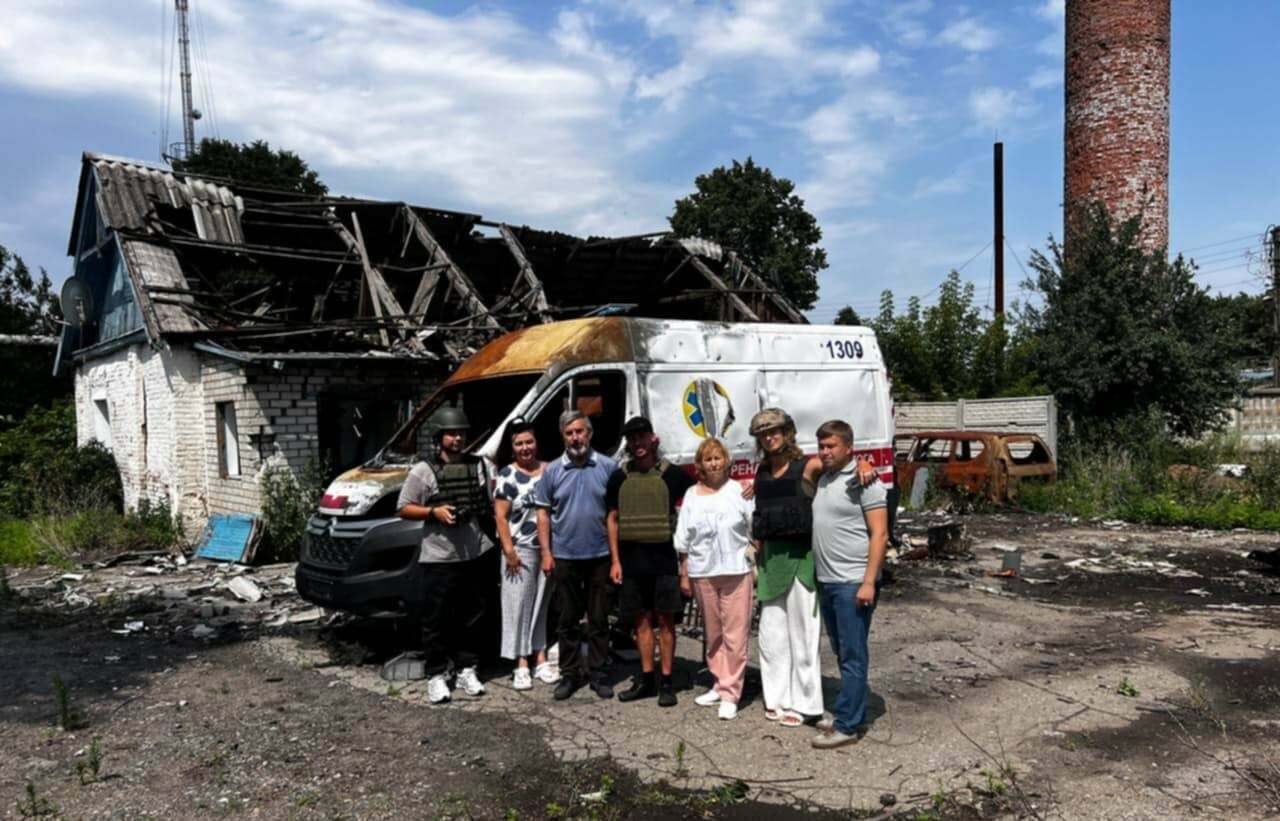
Employees of ‘The Unbreakable Family’ charitable fund on the territory of the ambulance unit destroyed by the enemy with an Iskander ballistic missile
The entire border is nothing but ruins...
How critical is the destruction in the Zolochiv community?
Around half of our residential buildings have been destroyed or damaged, many of them for the second time since we repaired them following the hostilities in 2022. Three of our 11 schools were completely destroyed, while the rest suffered varying degrees of damage. Several outpatient clinics, kindergartens and cultural centres in border villages are also in ruins. Sewerage networks, water towers, transformers and mobile communication equipment have also been destroyed... People are living as if they were in the nineteenth century. We even have a saying: ‘All the light comes from candles and stoves.’ In some villages, such as Vidrodzhenivske, Tymofiivka, Lemishchyne, Morozova Dolyna, Turove and Ivashky, we are constantly repairing the power grid. However, fibre-optic drones keep destroying them. These villages no longer have a single transformer. The situation in Ivashky is the worst; six months ago, it had electricity, water, gas, social buses and a mobile pharmacy... Despite the high level of danger, our starostas continue to work there, overseeing the movement of humanitarian aid and coordinating various forms of volunteer assistance. People at the border receive food, personal hygiene items and firewood, as well as diesel generators.
The situation on the border is fairly clear. But what about the rest of the community?
In Zolochiv itself, half of the housing stock was damaged. The social protection department building was hit by a 500-kilogramme unexploded aerial vehicle, leaving almost nothing behind. The building itself, all the computer equipment and all the furniture were blown to pieces. The Russians also destroyed the primary health care centre’s premises, which had seven vehicles, including four ambulances, parked outside. All of them burned down. The Russians are sparing no ammunition in their attacks on us. Recently, they also destroyed an alley containing a memorial to our fallen heroes with a guided aerial bomb strike. They also attacked a hostel for IDPs from Donbas, which we had renovated with the help of international donors, with Iskander and S-300 missiles. This occurred a week before 28 families were due to move in. You can imagine the state of a house after it has been hit by an Iskander ballistic missile...
You said that the community’s population has decreased by a third while its housing stock has been destroyed by 50 per cent. Does this mean that people no longer have anywhere to live?
About 300 families from our community have purchased new homes through the E-Restoration programme. These homes are located not only in different parts of Ukraine, but also within our community. The fact is that the destruction is unevenly distributed. The border area has been completely destroyed, and the situation with housing improves the further away you get from it. Some villages have not been affected at all. People tend to go to those areas.
What are the biggest challenges you face as a community leader in such difficult circumstances?
We need to actively restore critical infrastructure, housing, and communal facilities continuously. It is as if we are in a race with the Russians to see who will act faster: either we will rebuild, or they will destroy. So far, there is a certain parity in terms of the most important issues. Today, for example, a Russian Molniya UAV hit the centre of Zolochiv, damaging the power grid, the Treasury building, the cultural centre, shops and cars. The utility companies responded immediately and started fixing the damage...
Japanese partners of the Zolochiv community stand near the destroyed building of the social protection department. The building was hit by a 500 kg guided aerial bomb
The Alley of Heroes in Zolochiv destroyed by the Russians with an aerial bomb
The building of the Zolochiv settlement council after a Russian guided aerial bomb hit at a distance of 20 metres away from it
‘Shoulder-to Shoulder’: From Zolochiv to Zolochiv
Does your community take part in the ‘Shoulder-to-Shoulder: Cohesive Communities’ programme?
We have had a partner community in western Ukraine for a long time: a city called Zolochiv in the Lviv region. In fact, our roots come from there because our Zolochiv was founded by people who fled the western Ukrainian city to escape the Polish authorities’ repression following the wars of Bohdan Khmelnytskyi and the period of Ukrainian history known as the ‘Ruin’. Our residents even have the same surnames. We have been cooperating with our ‘relatives’ for a long time and have now joined forces on the extremely necessary and timely project, ‘Shoulder-to-Shoulder’, for the whole of Ukraine. As part of this project, twelve of our families travelled to western Ukraine, where international foundations renovated a dormitory for them. It turned out that these families had moved from one Zolochiv to another. Although it may seem insignificant, having the same name is actually very important. When people move a thousand kilometres away, they do not feel as acutely that they have lost their home. They continue to live in Zolochiv as before. Our partners in western Ukraine did a great deal to help rebuild our community. We received funds and building materials from them. Just a few months ago, our hospital was hit by five drones, and we are still repairing the damage. The Zolochiv City Council, our partner, has allocated UAH 1 million for this purpose.
How do businesses – particularly farmers, who were key contributors the community budget – operate in such challenging conditions?
Farmers continue to work and harvest crops near the border. What else can they do? They cannot simply abandon what they have sown and grown with so much hard work! They also need to take care of their people’s well-being and the community’s food security. That is why they work, despite the great risk to themselves. Sadly, we have lost about a third of our agricultural land. Now, either there is constant shelling, or the land is heavily mined. More than 3,000 hectares of arable land are occupied by defensive structures. Consequently, we now receive only 36 per cent of the income we had before the full-scale invasion. Before the invasion, our economy was based on livestock farming, processing and various forms of industrial production. We have lost all of this. While our annual budget was planned at UAH 250 million from our own revenues alone in January 2022, we now have barely UAH 120 million, of which UAH 90 million are our own revenues.
Does your community help the army?
This year, we received UAH 37 million in subsidies from the state, and we transferred UAH 31 million to the military. In addition, we purchased six more cars for them. The military is our main hope. We literally pray for them here at the border. We support them with money, equipment, food and anything else they require. That is why most of the residents and I believe that all available funds should be sent to the army immediately. Only what was absolutely necessary was restored. In 2023, we learnt an important lesson when both North Korean missiles and Russian guided aerial bombs destroyed and damaged all 18 facilities that we had worked hard to repair. The sports and recreation complex was the most notable of these. It was our pride. It was literally dismantled by drones.

Participants of the slalom cycling competition near the destroyed by Russian drones sports and recreation centre of the Zolochiv community
A hospital in the Zolochiv community damaged by enemy drones
Children from the Zolochiv community congratulating border guards on their professional holiday
The son of the fallen border guard Mykola Postolnyi hoisting the flag in Zolochiv
As part of the ‘Shoulder-to-Shoulder: Cohesive Communities’ programme, the Zolochiv community together with its partners is sending ‘war birds’ to the defenders of Ukraine. Second from left: Viktor Kovalenko, third from left: Oleh Syniehubov, Head of the Kharkiv Regional Military Administration
Investment specialist in an investment-unfriendly community
Do international donors help the Zolochiv community? What kind of assistance does it need most of all?
We need food and personal hygiene products. However, we currently have enough of these items, as we have signed 32 agreements with various charitable organisations in advance, including those in Kharkiv and other national and international organisations. These include ADRA and World Central Kitchen. Thanks to them and others like them, residents of the border area, where there are no longer any shops, receive food, firewood, fuel briquettes and other essentials three times a month. In total, 4,300 out of 8,500 households receive this assistance, meaning almost all of them, including those who have left. Every family that has moved here from other communities, as well as our internally displaced persons from the border, receive a food parcel once a month and personal hygiene products every six months. There is also a shortage of building materials because many houses are damaged by Russian strikes and need to be restored quickly. However, the State Emergency Service, the police, the medical service and the Red Cross promptly arrive after each such strike. All actions are coordinated by the humanitarian centre of the regional military administration. Representatives of the Proliska Humanitarian Mission are also always among the first to arrive.
With more than twenty years’ experience working as a director of the investment department at the Ministry of Economy in the Kharkiv Regional State Administration, you must have gained considerable expertise in attracting investment. Has this experience helped you in your role as a community leader? How much investment have you attracted since 2020?
Indeed, I have extensive experience in attracting investment and in local politics. Before becoming head of the community, I was deputy head of the Kharkiv Regional Council. In this role, I dealt with issues relating to foreign economic activity, international relations and investment attraction. I was one of the developers of the draft law on industrial production zones, which was adopted in 2014. The creation of such zones was also the subject of my academic research. At the end of 2020, I returned to my hometown, the land of my parents, and was elected the head of the Zolochiv community. However, I only had a year of normal work before the full-scale invasion.
What did you manage to do during that year?
We prepared design and estimation documentation for 18 facilities. Then, tens of millions of hryvnias had to be allocated to related projects. For instance, investors had to invest UAH 26 million in our distillery alone to convert it to produce alcohol from corn. Another company planned to invest almost UAH 20 million in our community’s production and we have already allocated a dormitory for its employees. In preparation for the grand celebration in 2022 of the 300th anniversary of a Ukrainian philosopher Hryhorii Skovoroda, who was buried in our community, we overhauled 30 kilometres of roads and planned to repair a further 40 kilometres in 2022. Funds for this project had already been allocated in the state budget. However, the implementation of all these projects now looks almost unrealistic. We must wait for the war to end, or at least for hostilities to cease.
Do you cooperate with partner communities abroad?
Yes! I returned from the United States a few weeks ago, having attended the 93rd U.S. Conference of Mayors. We are also establishing partnerships with regions in France, Belgium, the Netherlands, Germany, Italy and Poland. Our main objective is to send our children there for recreation. In early October, our football team will travel to Fellbach, a city near Stuttgart in Germany, for recreation and to play in a series of friendly matches. Last week, in cooperation with many other caring people, our partners from Lemoore, California – Józef Broniewski from the Rotary Club and Ihor Balaka from the Crown of Hope Charitable Foundation – handed over a modern specialised ambulance to our Primary Health Care Centre. They personally delivered the ambulance across several borders and went through all the necessary bureaucratic procedures. However, it takes time for such projects to become a reality.
Delivery of the ambulance to the Zolochiv Primary Health Care Centre
On the bonnet of the ambulance, which the donors brought from the United States, lines from a poem by Oles Babii are written, which in 1932 became the lyrics for the March of Ukrainian Nationalists – the official anthem of the OUN:
‘And we are going in the battle of life,
Hard, strong, unbreakable, like granite,
Because crying has not given freedom to anyone,
And whoever fights wins the world...’
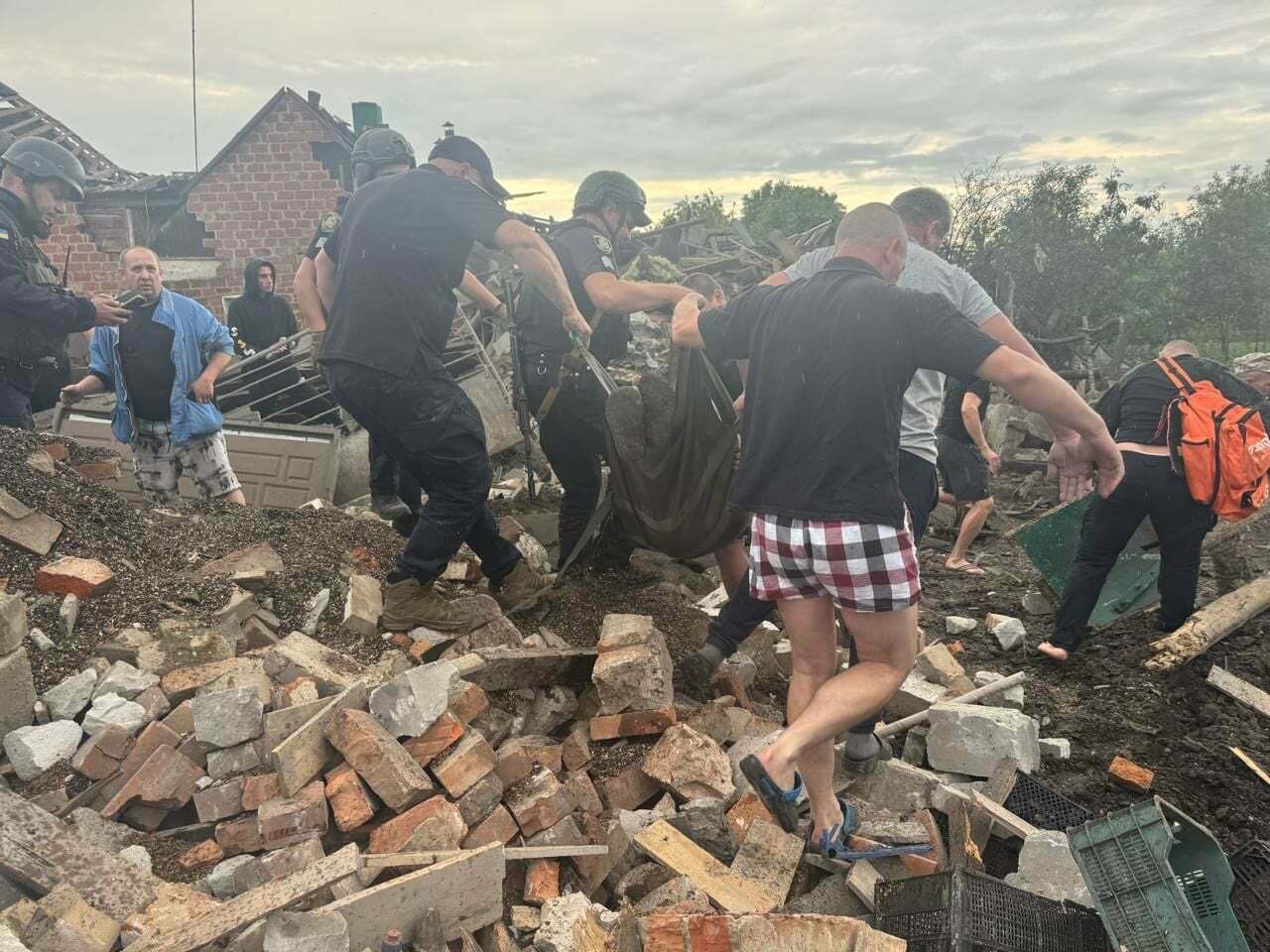
Homes of residents of the Zolochiv community destroyed by the enemy and rapid repairs with the help of employees of the Proliska Charitable Humanitarian Mission
We are protected by the spirit of Hryhorii Skovoroda…
How do you see the future of the Zolochiv community on the border with the Russians?
Given that our crazy neighbour is not going to disappear, we cannot expect any special investments. On the other hand, it is clear that a strong military presence will always be stationed in our community. We have already allocated land for the construction of military camps... However, we also have fertile land, a strong agricultural sector, and a large deposit of heat-resistant clay near the village of Oleksandrivka. Back in Soviet times, the French started building a plant there, but after the collapse of the Soviet Union, they abandoned the project. Our village of Fesky has the fourth largest water reservoir in the Kharkiv region. We already have an investor who has developed plans to build a sanatorium with a golf club and tennis courts. He has already spent more than USD 300,000 on design and estimation documentation. Another investor has purchased a furniture assembly facility from us. It was intended to become a major furniture production hub. I think that, as soon as the shelling stops, these projects will be implemented.
The destroyed Zolochiv cultural centre
In 2022, the Hryhorii Skovoroda Museum in your community was destroyed by a Russian X-59 missile. Have you considered moving Skovoroda’s grave to the safer regions of Ukraine?
We removed all the most valuable exhibits from the museum in advance, realising the danger. However, this Russian missile destroyed many of them. The strike was targeted at the very heart of the museum: the nineteenth-century house in which Hryhorii Skovoroda lived during his time here. Over the years, philosophers from all over the world came to visit that house. This was an attempt to destroy part of our identity and memory. As for the Hryhorii Skovoroda’s grave... This issue is not on the agenda. Firstly, because Skovorodynivka, where our outstanding countryman is buried, is 35 kilometres from the border. Any work there now would be dangerous. I will also be completely honest and say that not a single person in our community would support moving the remains of the famous philosopher anywhere else. Some people are convinced that it was Skovoroda’s spirit that protected our community from the Russians in 2022. If so, he does not want to leave his homeland. His grave is sacred to us. It is our community’s amulet, our place of strength. Once the war is over, it will become a huge tourist attraction. This is especially true given that Skovorodynivka has extraordinary natural beauty. It is no wonder that Skovoroda, who had travelled extensively, chose our community as the place where he would spend the rest of his life. According to legend, sensing his imminent death, he dug his own grave, dressed in clean clothes, lay down on a bench, and passed away. It all happened in our community.
Do you have any investment projects related to tourism and recreation in the ‘places that Hryhorii Skovoroda loved’?
Our Israeli partners had wanted to build a hotel with a restaurant in Skovorodynivka for some time, and we had identified a suitable location. The idea behind the ‘Shoulder-to-Shoulder’ project is that there will be outpost communities on the border – fortress communities – which will be supported by the whole of Ukraine. These communities need to be supported, developed and protected in every possible way, and in turn they will protect the entire state. Since we are an outpost community ourselves, nothing should be taken away from us. This is especially important when attracting investment is so difficult. I am talking again about the proposal to transfer Hryhorii Skovoroda’s remains elsewhere.
How do the community residents feel now?
They hate the Russians. This is true even in villages where the descendants of ethnic Russians who moved here from the Orel and Kursk provinces live. Until 2022, the Ukrainian language was rarely heard there, but now everyone speaks only Ukrainian. There are no people waiting for the ‘Russian world’ at all. Even though our priests are of the Moscow Patriarchate, they no longer mention Patriarch Kirill Gundyaev in church services. They conduct services exclusively in Ukrainian and pray for the Ukrainian people, our land and our soldiers. I do not know where Kirill is still commemorated. Only in Russia and in hell.
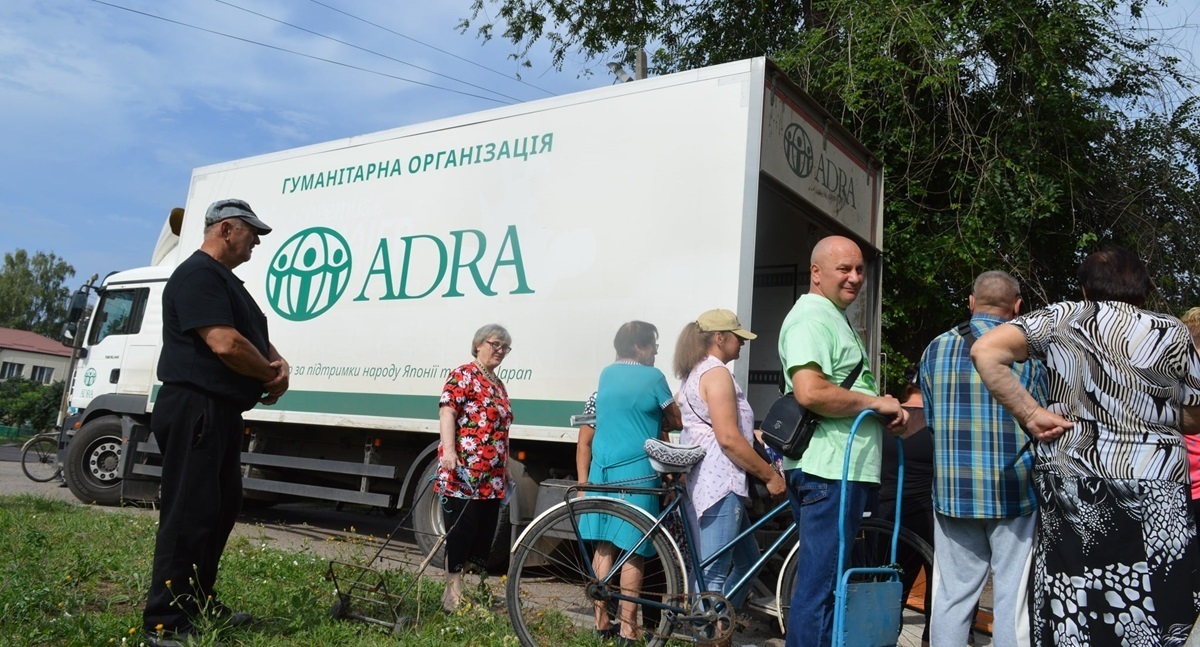
Humanitarian aid delivered to the Zolochiv community
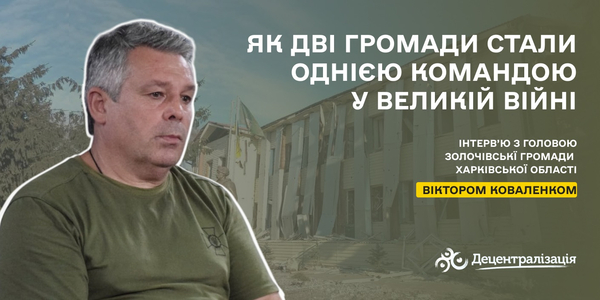
Tags:
war stories war stories special project report side by side
Область:
Харківська областьГромади:
Золочівська територіальна громадаSource:
Decentralization portal

31 December 2025
Decentralisation: Highlights for December
Decentralisation: Highlights for December
At the beginning of each month, the Decentralisation portal summarises the Government’s and Parliament’s decisions...
31 December 2025
«Люди знаходили тут прихисток цілими родинами». У Чернігівській гімназії № 13 відремонтували укриття
«Люди знаходили тут прихисток цілими родинами»....
Коли у 2022 році розпочалося повномасштабне російське вторгнення, укриття Чернігівській гімназії № 13 стало...
31 December 2025
Практичний дороговказ для громад: вийшов...
Методичні рекомендації «Як створити Центр психосоціальної підтримки на локальному рівні» є комплексним, практичним та...
31 December 2025
DECIDE розширює партнерство: визначено нові області для другої фази проєкту (2025–2030)
DECIDE розширює партнерство: визначено нові...
Завершено конкурсний відбір партнерських областей Швейцарсько-українського проєкту «Децентралізація для розвитку...
